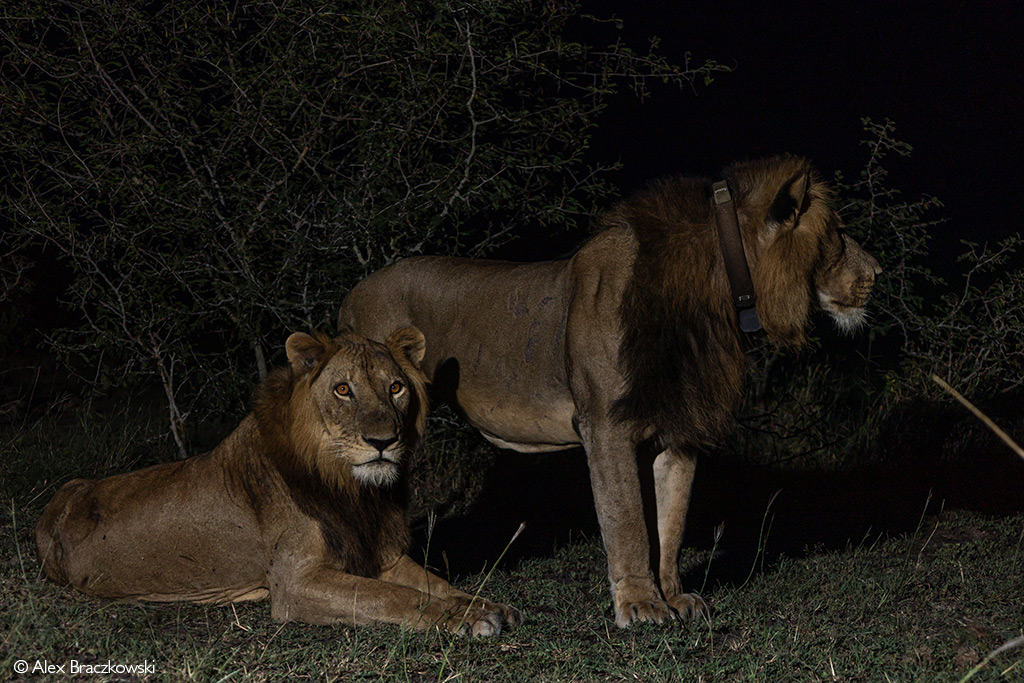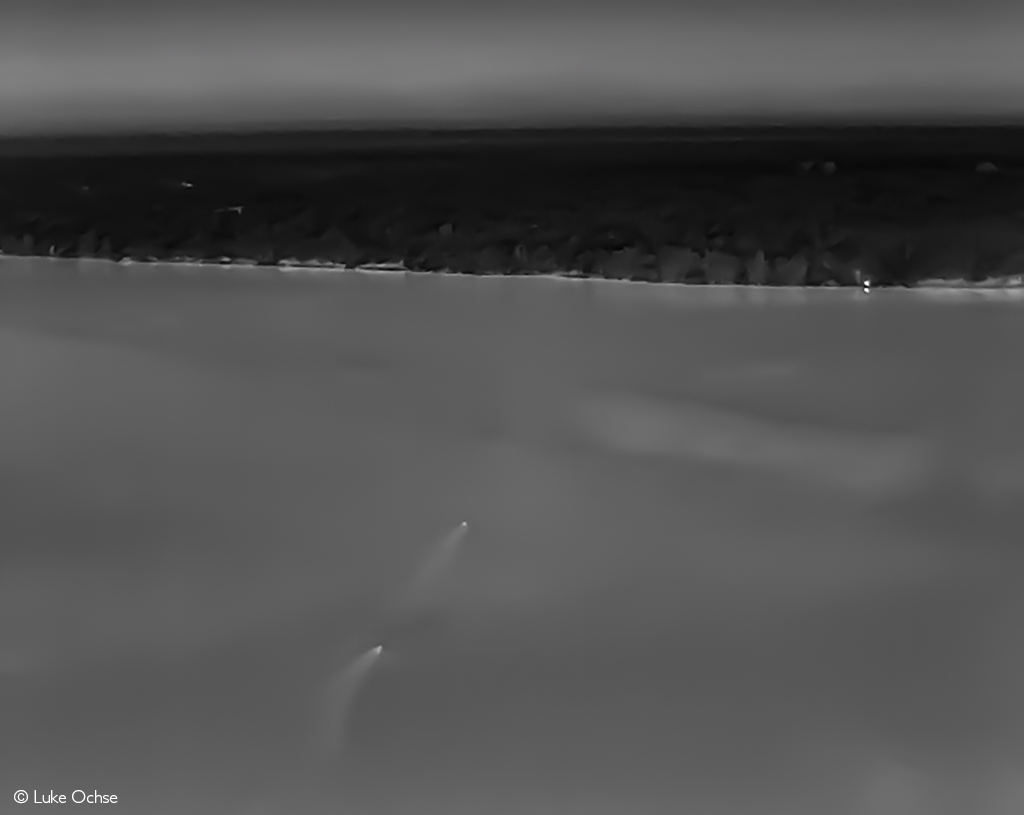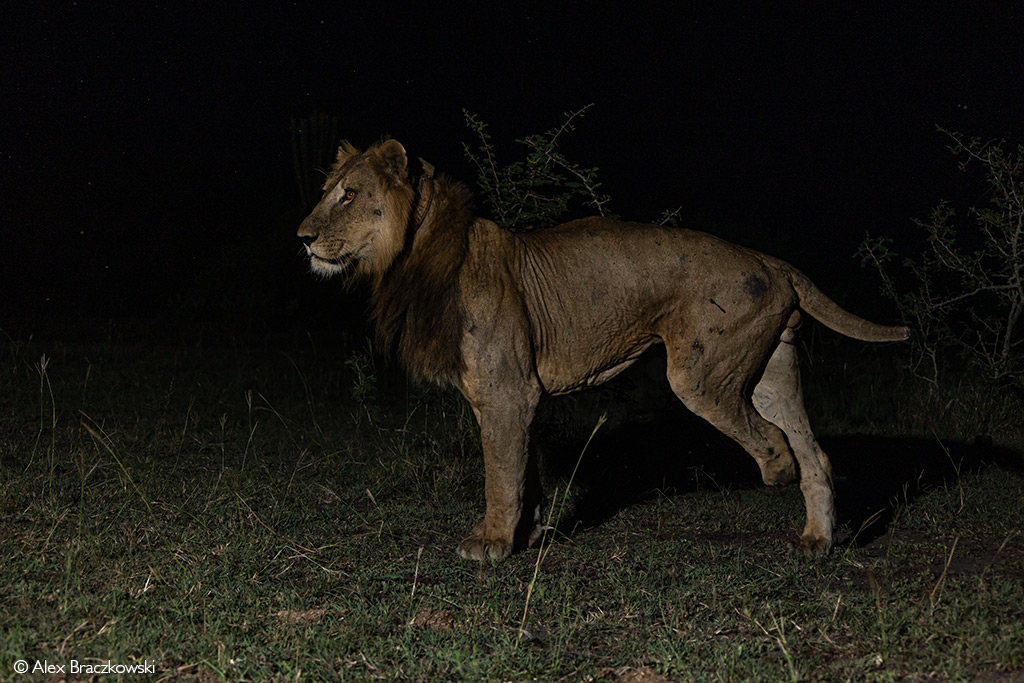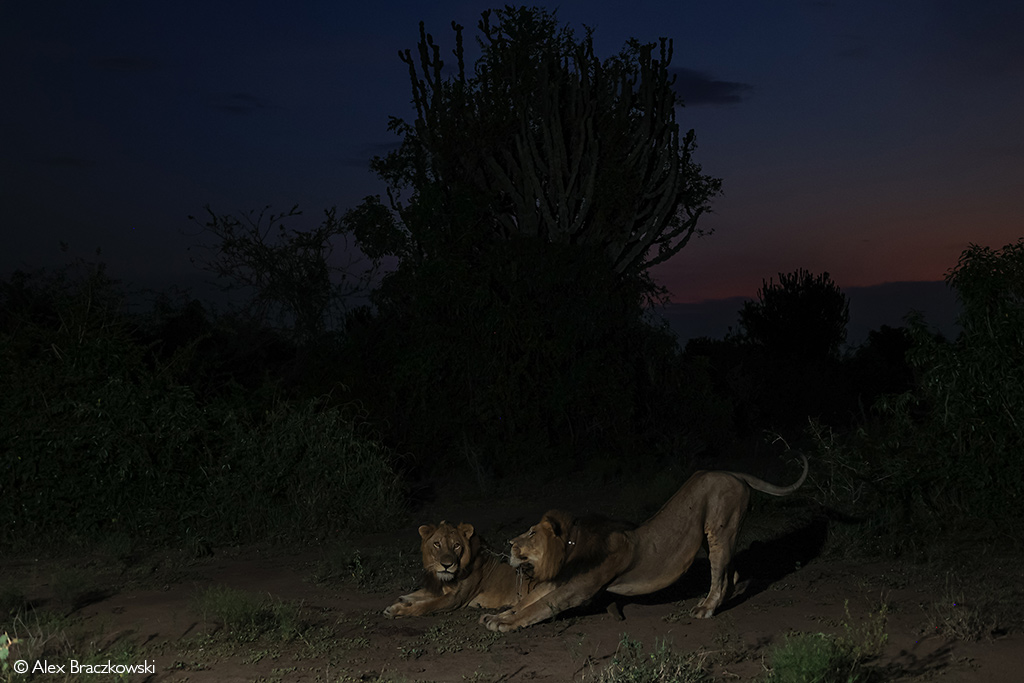
Researchers had long suspected that lions were swimming across the Kazinga Channel, joining Lakes Edward and George, in Queen Elizabeth National Park, Uganda. But could they prove it, and could they figure out why?
“You might want to think about bringing the drone back, or you’ll have nothing but a good story and a sunken drone,” I softly whisper to drone operator Luke Ochse. My team has just witnessed something truly incredible – a coalition of African lions swimming across a nearly 2km-wide channel connecting two lake systems in western Uganda, a never-before-seen behaviour by the species. This extraordinary event not only demonstrates the adaptability of these majestic creatures but also raises intriguing questions about their behaviour and survival strategies.
Watching a few Derek and Beverley Joubert lion documentaries filmed in the Okavango Delta [the delta itself ironically is an impassable barrier to lions in Botswana] reveals that African lions can make short swims across narrow rivers and swamplands to hunt and patrol territory. However, lions don’t seem to share the same affinity for water as crocodile-hunting jaguars, or swimming tigers, and our team of researchers could find no evidence online of long-distance swimming by African lions, making our discovery even more remarkable and unprecedented.
After nearly two years of intensive monitoring of this lion coalition, we know they have swum across this channel at least six other times. But these swims beg the question: Why would a coalition of male lions risk getting killed by crocodiles and hippos or drowning in a 6-meter-deep channel of water? This high-risk behaviour suggests compelling reasons driving them to undertake such dangerous journeys.


Our scientific paper postulates that two interconnected phenomena are occurring: the male lions are searching for lionesses, and when they fight fiercely with established males, they swim back to their own territory. Our long-term research on this lion population shows that it has declined significantly over the past decade and now features an unnatural surplus of male lions, making lionesses a hot commodity for mating rights. We suspect that finding mates is more important than prioritising their own lives against the dangers of hippos or crocodiles. The only other explanation we could come up with is that the lions are avoiding the one narrow connection point, a small 40-meter-long bridge between the northern and southern parts of the park, where there is a strong human presence in the form of a community.

Even more stunning about the near half-Ironman-distance swim the lions made is that one – a male lion affectionately known to rangers and scientists as Jacob – has only three legs. Although slower than his brother Tibu, he made the swim several times over the two years we followed him. Jacob’s resilience and determination add a poignant layer to our observations, highlighting the extraordinary lengths these animals will go to in their quest for survival and companionship. “We’d speculated for a long time that lions in Queen Elizabeth [National Park] were swimming across the Kazinga, but no one had ever captured this behaviour visually, ” says Orin Cornille, a Volcanoes Safaris Partnership Trust Lion Monitoring team member. “It was only with the help of a DJI Matrice 300 drone and H20T thermal camera that we could confirm this”.


The swimming behaviour we observed and documented as part of our study highlights an increasing global trend: animals are going to more extraordinary lengths to move and find homes and mates. In India, it is common to see leopards making long-distance treks through populated cities like Mumbai and Bangalore, even hiding in warehouses along the way. P22, Los Angeles’ most famous mountain lion, crossed the USA’s 101 Freeway – one of Earth’s most expansive 10-lane traffic highways. A herd of Asian elephants was recently documented crossing nearly 500km across farms and rural towns in southern China. These examples underscore a critical reality: wildlife is increasingly navigating human-dominated landscapes in search of resources and survival.
Watch the video below:

To comment on this story: Login (or sign up) to our app here - it's a troll-free safe place 🙂.![]()





